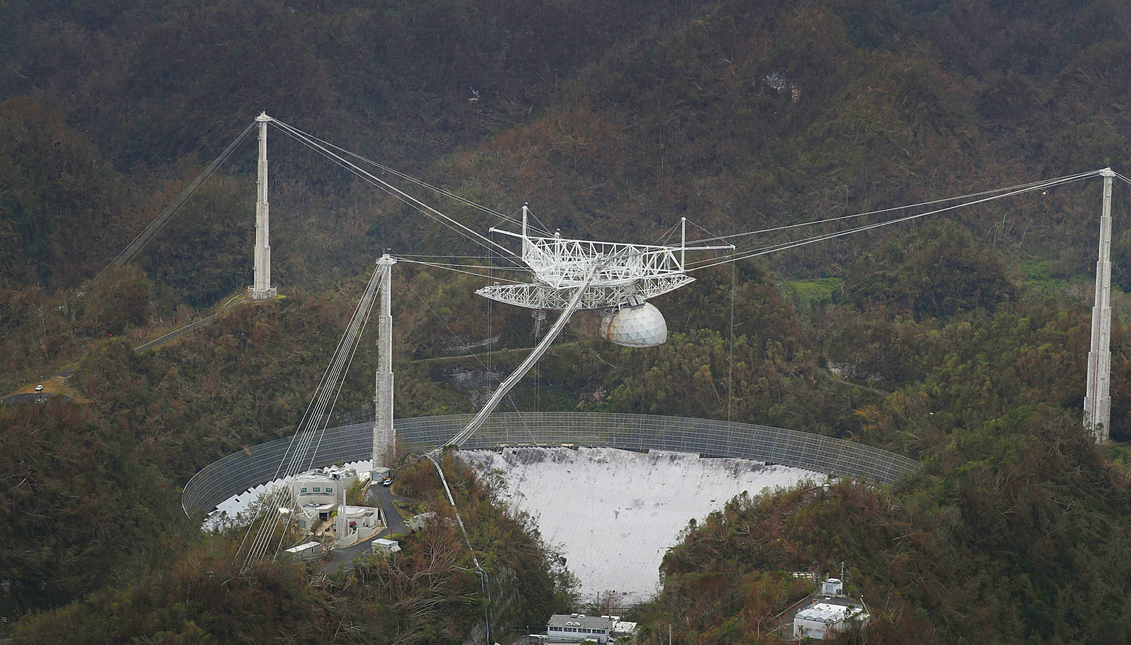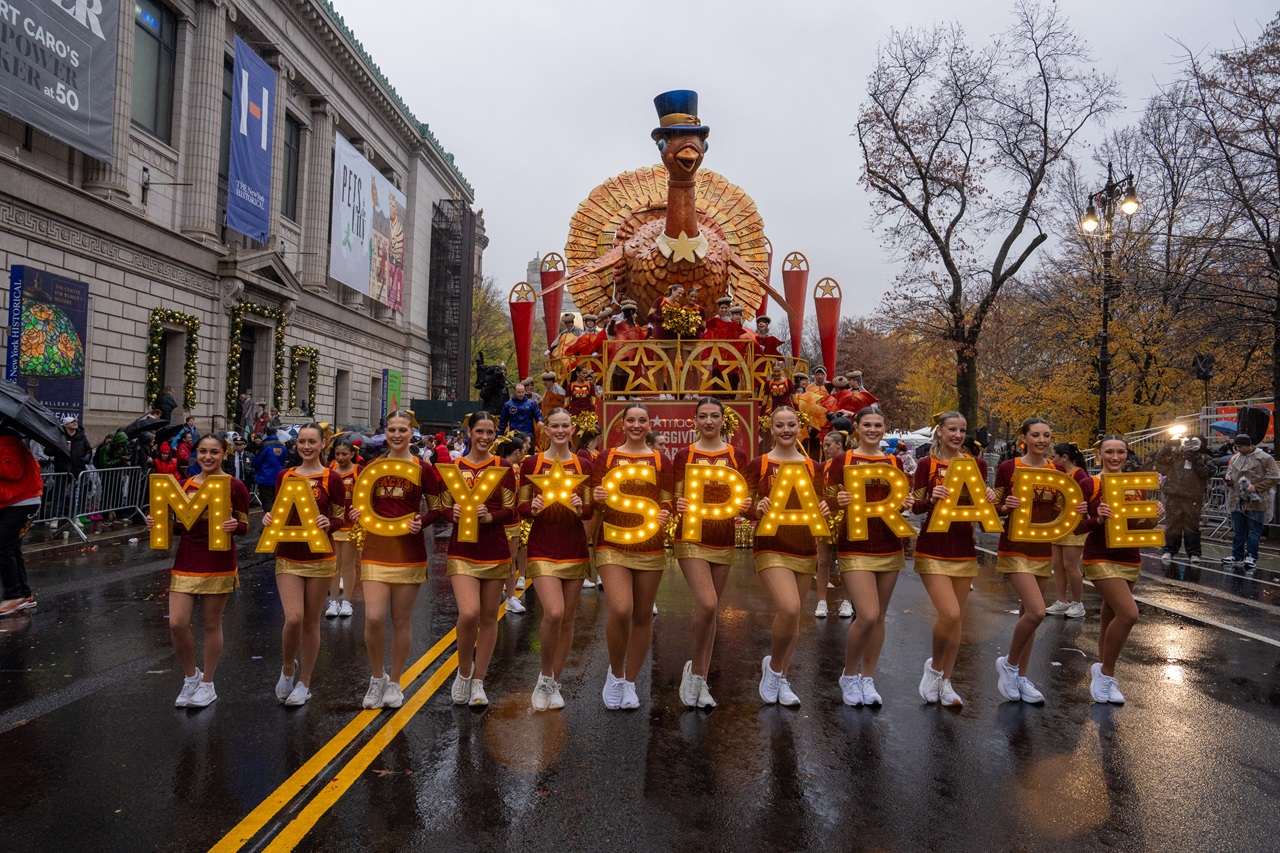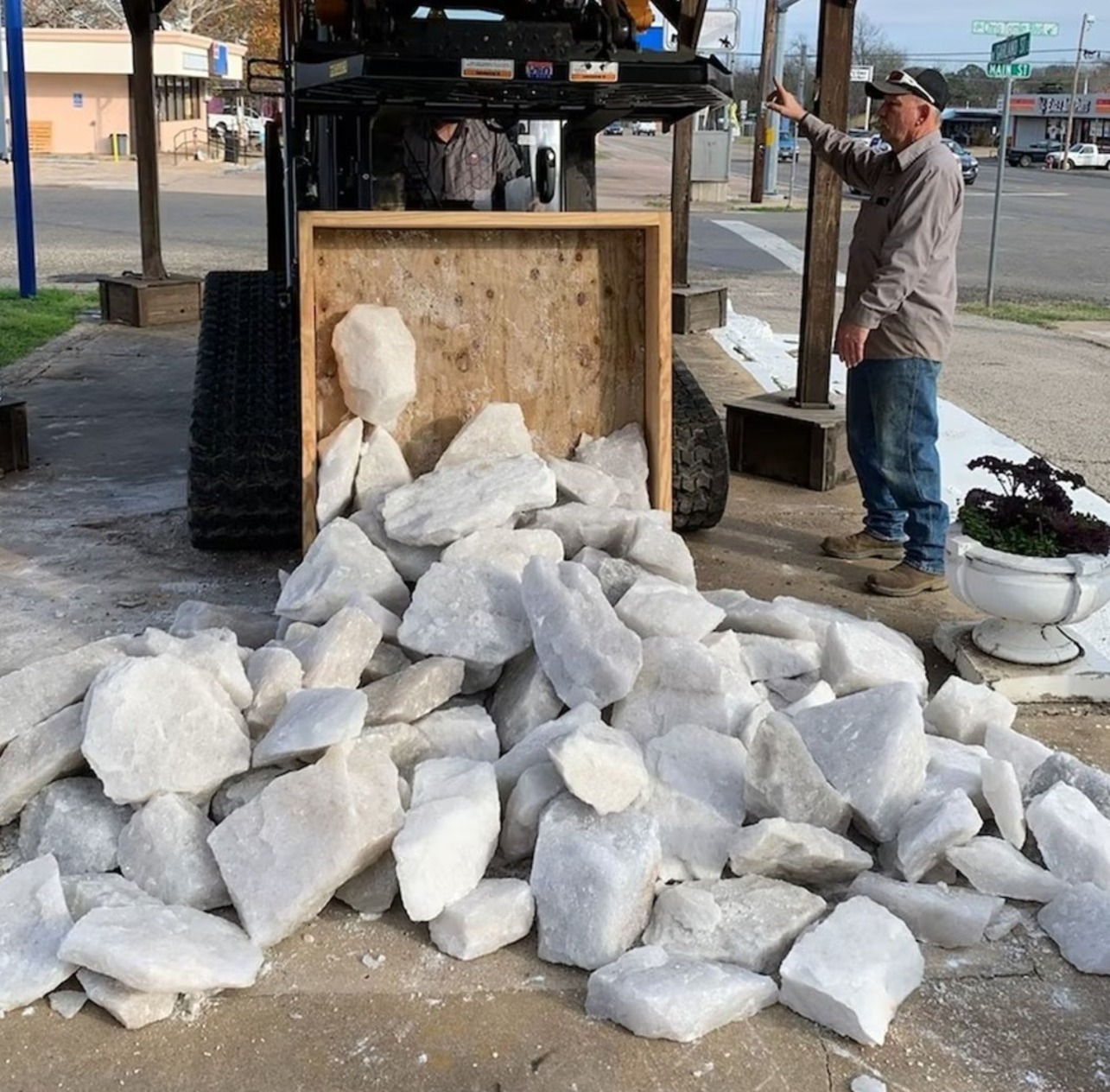
Remembering the Arecibo Observatory, the “Jewel” of Boricua science
The move by the National Science Foundation to demolish the Arecibo Observatory comes after the collapse of two main cables on the structure.
When it was announced on Nov. 19 that the Arecibo Observatory in Puerto Rico would be decommissioned and demolished following the failure of a second main cable to its structure, the news was met with universal sadness in the science world and on the island.
For the facility, the first cracks came in 2017, as Arecibo, like the rest of the island, had to weather Hurricane Maria and the damage it wrought to the tune of $14.3 million in repairs.
In 2020, the first major cable collapse came in August, when an auxiliary cable fell out of its socket and cut a giant gash in the massive dish. As engineers worked to replace the cable, another collapsed on Nov. 6.
At the announcement on Nov. 19, leaders at the National Science Foundation (NSF) said the safety risk was too much to try to make repairs and it would need to be demolished.
For 57 years, the observatory, named for the town in which it is based, was both a center for some of humanity’s biggest space discoveries and a place where generations of young Puerto Ricans were inspired by the stars to pursue careers in the fields of astronomy and science.
Initially, Arecibo was built to conduct radar studies of the Earth’s ionosphere, but given its status at construction as the largest single-aperture telescope in the world, it also began conducting studies in the relatively-new fields of radio and radar astronomy.
In other words, the observatory quickly transitioned its efforts to the stars in search of exoplanets and extraterrestrial intelligence (SETI).
Major discoveries and achievements throughout its history include finding the first solid evidence of neutron stars in the galaxy in 1968. In 1974, scientists Russell Alan Hulse and John Hooton Taylor won a Nobel Prize in Physics for discovering the first binary pulsar. Fifteen years later, further observations built upon both discoveries led to the identification of the first planets outside of our solar system.
On the local front, generations of Puerto Ricans visited the massive facility on family or school trips and were captured by both its mission of finding life in the stars and the sheer scale of the operation.
Many of those inspired went to social media with the hashtag #WhatAreciboMeansToMe to express their sadness at the observatory’s closing and share stories of their first visits and experiences at the larger-than-life site.
“More than a telescope,” was how the message of young astronomer Kevin Ortiz-Ceballos started on Twitter.
“Arecibo is the reason I am even in astronomy, and has had an incalcuable impact in the communities of PR,” he continued before recounting in a thread how his first job in astronomy was at the facility and his first visit came with his parents as a child.
#WhatAreciboMeansToMe: More than a telescope, Arecibo is the reason I am even in astronomy, and has had an incalculable impact in the communities of PR. A thread . pic.twitter.com/GOFGXAlQ3o
— Kevin Ortiz Ceballos (@kortizceballos) November 19, 2020
He was far from the only one, and was joined by those in and out of the profession.
#WhatAreciboMeansToMe I visited the observatory many times as a kid. As an adult I visited every year I returned to Puerto Rico. I may not have turned out to be a Planetary Scientist, but el Observatorio was one of the pivotal influences in cementing my interest in science. https://t.co/2uFFor0bCB
— Liz Albertorio Sáez (@LizAlbertorio) November 19, 2020
#WhatAreciboMeansToMe The Arecibo Observatory was the first place where I learned that it was possible to explore the Universe. It showed to me that I had a purpose in life to explore, be educated, and to strive for grater goals and become a Physicist. pic.twitter.com/m4G7fFga0W
— Tamara González-Acevedo (@pr_tammy) November 19, 2020
But perhaps the greatest tribute of the last couple days came from Puerto Rican singer-songwriter Kristian Bob, who posted a short tribute tune to the observatory on Facebook in the form of a final transmission to the stars.
Bob told AL DÍA that his first time at Arecibo was with his dad in the sixth grade during a day off after Three Kings Day.
RELATED CONTENT
“It was very impressive, obviously,” he said, “but it was also a fun experience because they had a lot of other exhibitions.”
Bob remembers one that was a satellite map of Puerto Rico where visitors could find their houses on the island.
Beyond his own experience, he said the younger Puerto Ricans not only looked at Arecibo as a starting point to their careers in science, but also had an immense connection because of its location.
“To have it as a sort of sense of pride of your island, [it’s] something your parents were proud of, your grandparents were proud of, and you could maybe be a part of it,” said Bob.
In writing the song, Bob looked at Arecibo’s closing as symbolic of Puerto Rico’s fight to have a voice not only on the U.S. national stage, but also around the globe.
“Puerto Ricans have the trouble of feeling like we’re not heard,” he said. “When it closed, I said: ‘Wow, we even lost our voice into space.’”
Despite the struggle, he hopes the song is a positive look to what is the end of an era.
Mónica Feliú-Mójer, communications director at Ciencia Puerto called Arecibo the “jewel of boricua science” and told El Nuevo Día that its planned demolition was “devastating.”
“From my personal and the scientific point of view, its value is incredible,” she said.
As engineers chart a demolition plan, leaders at the NSF said they hope to be able to continue work eventually at the visitor’s center on site, and at an offsite facility on the island of Culebra that collects data on clouds and rainfall.











LEAVE A COMMENT:
Join the discussion! Leave a comment.